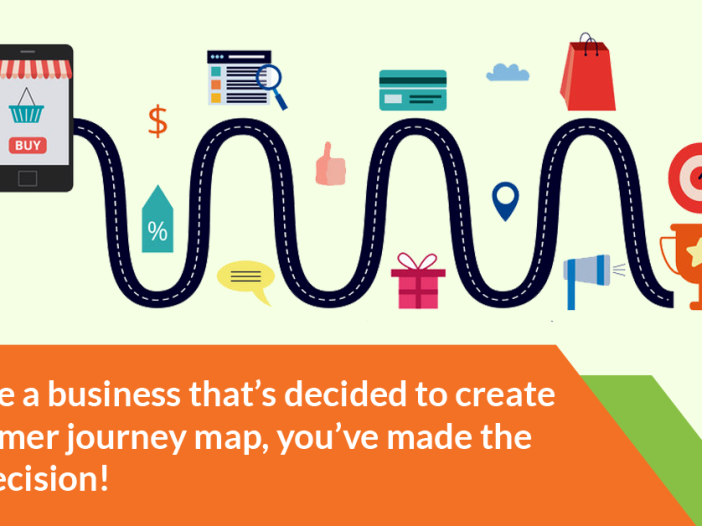
If you’re a business that’s decided to create a customer journey map, you’ve made the right decision!
Customer journey maps are visual or written records of the customer experience for each individual business, or even for each transaction within a business. The goal of mapping the customer journey is to help both the customer and the business.
Customers can get a clearer idea of what the business intends to do for them, and businesses can set goals so that they know what to work towards when improving the customer experience.
Take a look at these 3 steps for mapping the customer journey, and get started today.
- Avoid PowerPoint.
Many conventional businesses stick to the tried-and-true PowerPoint to create a customer journey map; however, avoid this in order to create one that is truly unique and visually appealing to customers (if you choose to share with them).
PowerPoint is limiting in that you can only display one main idea per slide; a true customer journey map should compare all aspects of the journey, from start to finish, side-by-side. This allows the business (and the customer) to gain a comprehensive idea of the customer experience, and seeing this “bigger picture” helps craft overall impressions and goals.
When creating a customer journey map with the aim of handing out to customers, try a brochure or flyer format; making it aesthetically pleasing will also add to your sense of professionalism.
- Include separate phases.
Customer journey mapping should always divide the experience into discrete phases.
These phases commonly include awareness (of the business or product), questioning, pricing, purchase, post-sales support, complaints, upgrades, and renewal of the original purchase. Include some or all of these phases, or try out some new ones unique to your business.
Each phase should include goals that you want the customer to have accomplished by the end – for example, “know what the product is and why it is better than the competition” – as well as an estimated timeframe for this goal to be accomplished in (will it take one phone call? ten?).
- Specify “customer touchpoints”.
Each phase of the customer journey will have certain “touchpoints” where customers will interact with your company, whether through communicating with employees, reading a brochure or flyer, visiting your website, or interacting on social media.
Specifying these points will allow you to have a clear course of action to make the customer journey a reality – you need to release this commercial or make this phone call.
Recommended Reading: 3 Steps for Mapping a Customer Journey
[wp_social_sharing social_options=’facebook,twitter,googleplus,linkedin,pinterest’ facebook_text=’Share on Facebook’ twitter_text=’Share on Twitter’ googleplus_text=’Share on Google+’ linkedin_text=’Share on Linkedin’ icon_order=’f,t,g,l’ show_icons=’0′ before_button_text=” text_position=’l’ social_image=”]
